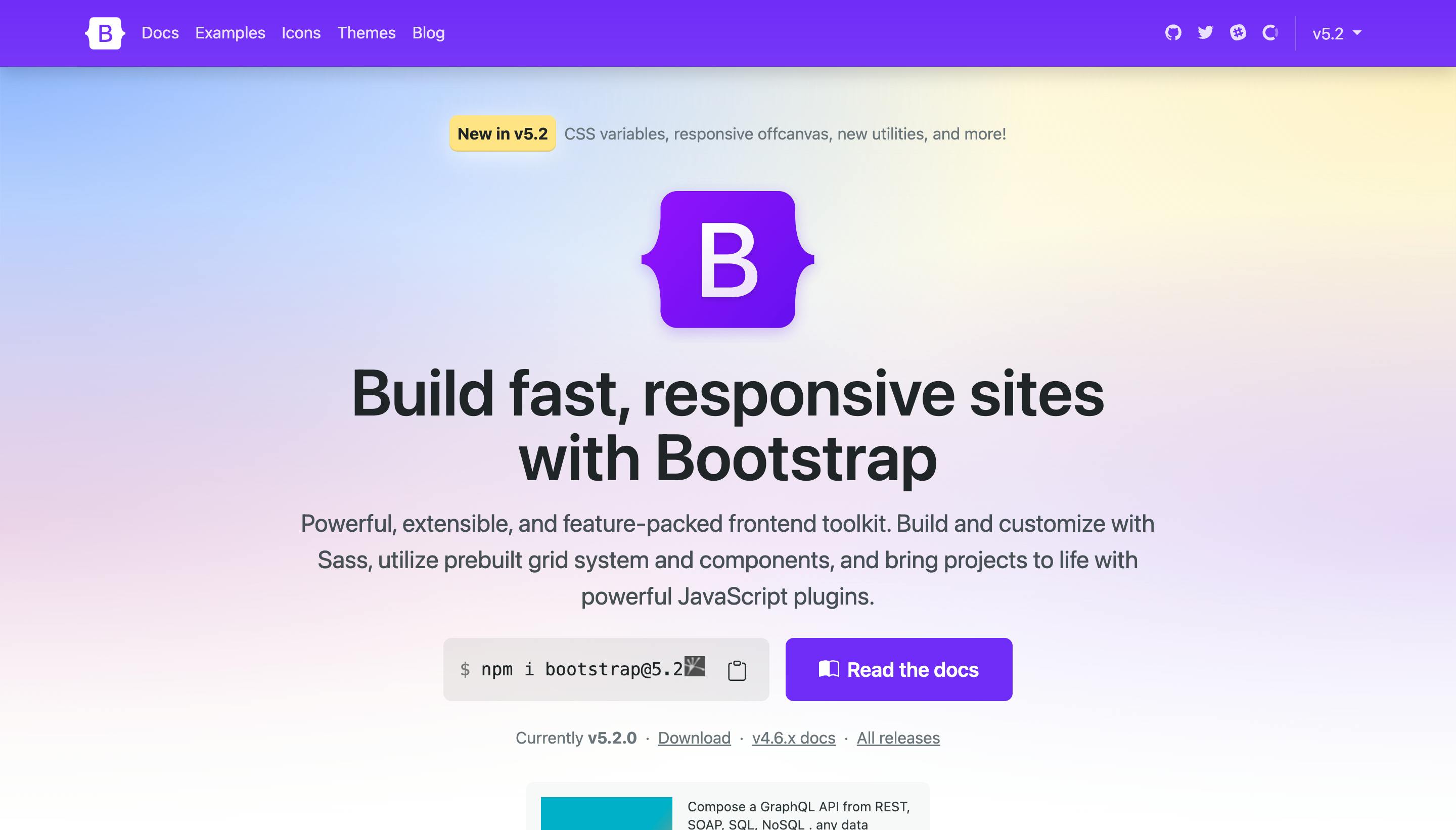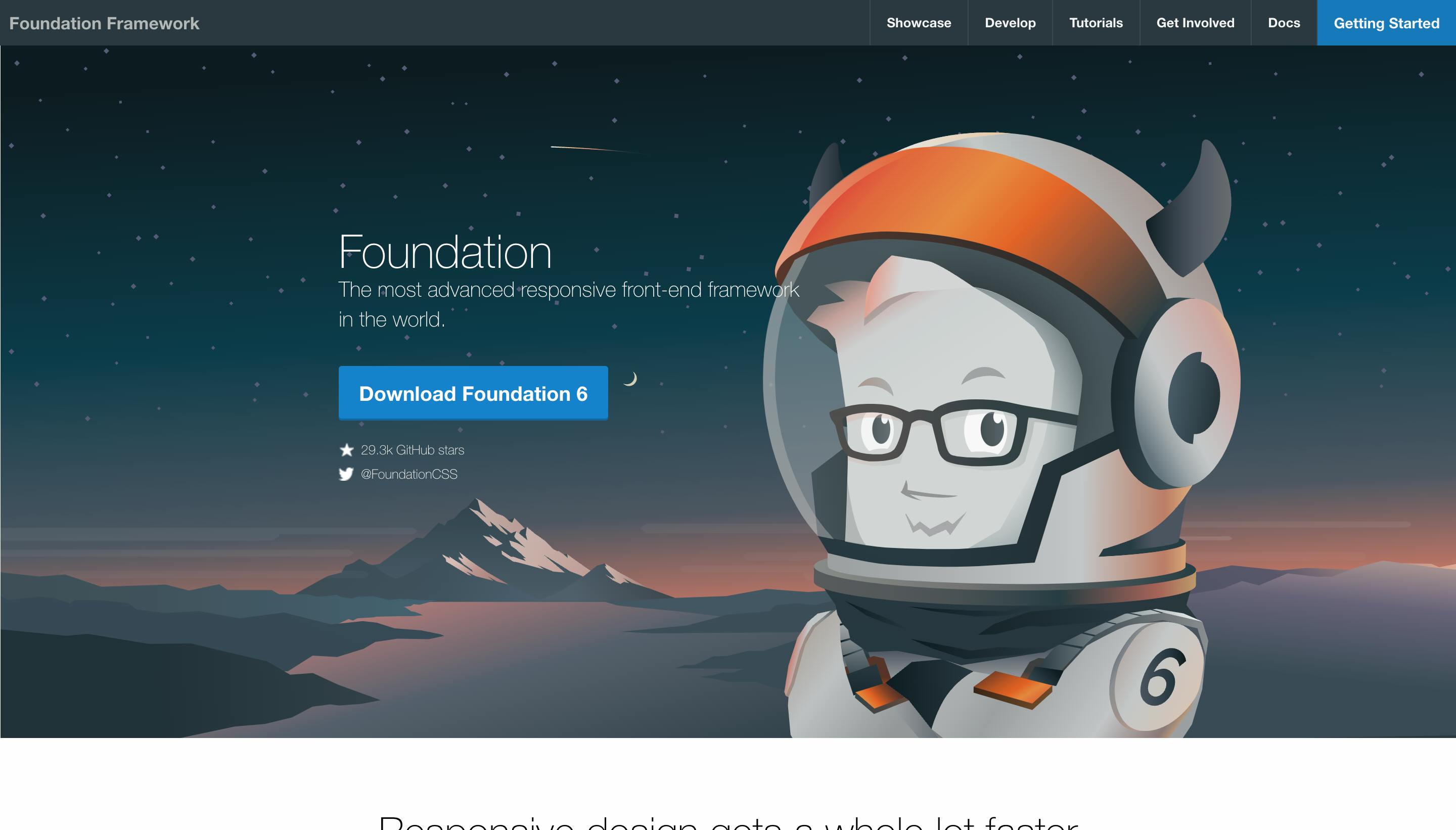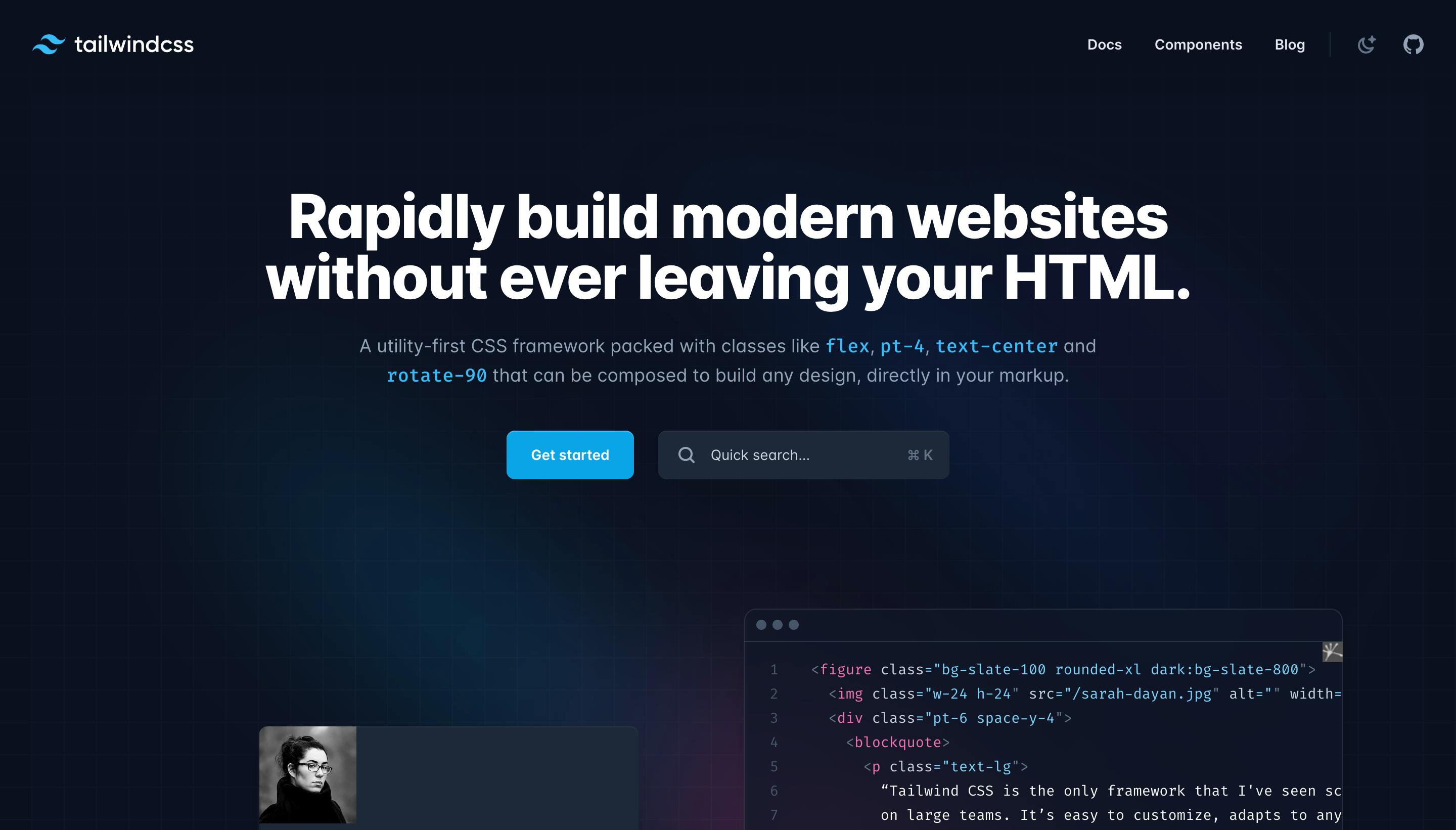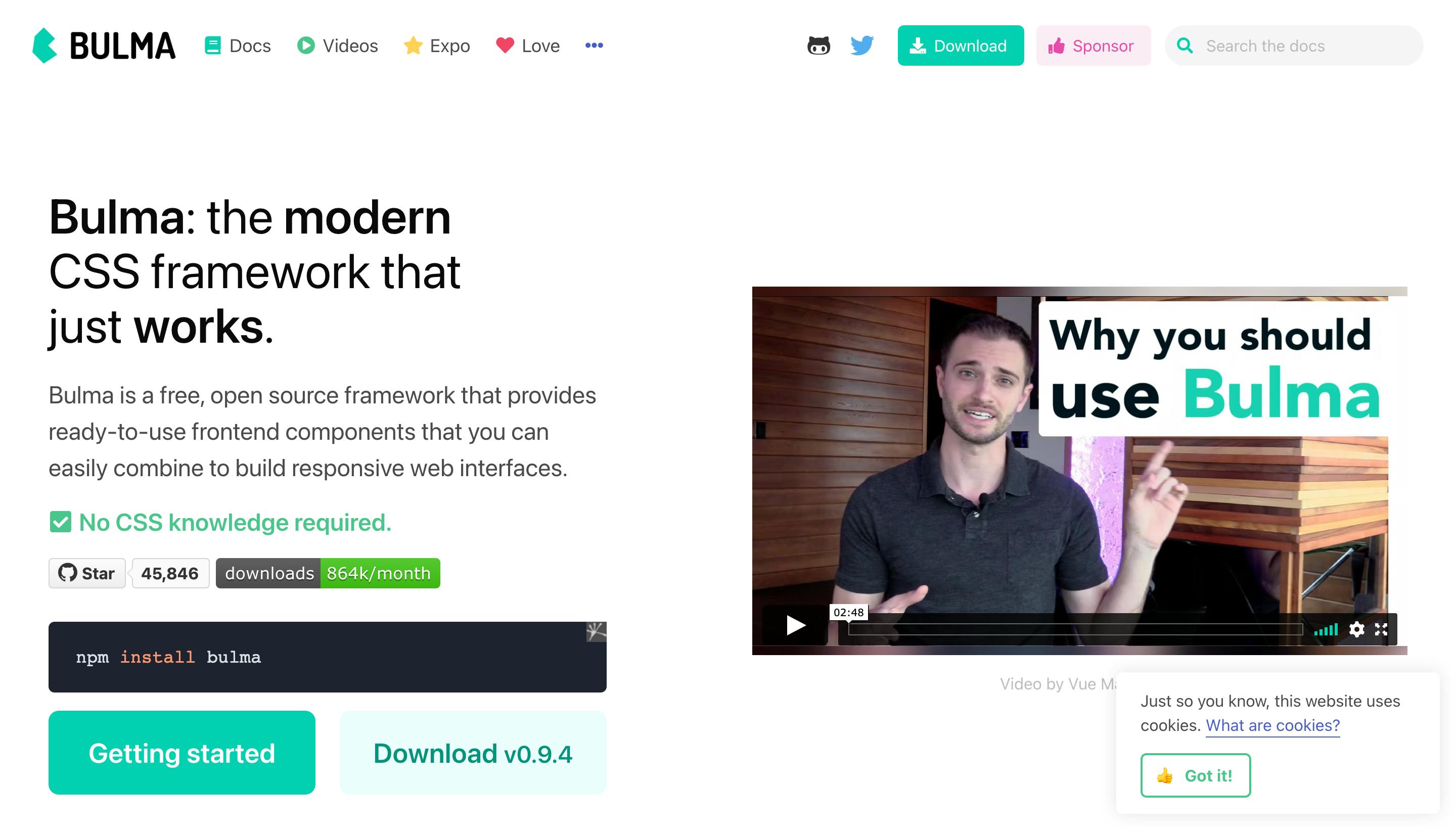Table of contents
No headings in the article.
How then do you choose which CSS framework is best for your project and which one to use?
This post might assist you in doing that since I'll attempt to describe the benefits and drawbacks of popular CSS frameworks.
1) Bootstrap
Because of its responsive design, Bootstrap is one of the greatest CSS frameworks. It was created by Twitter and made available in 2011. The Bootstrap framework includes HTML, SASS, and Javascript. There is no need to build unique code to target tiny devices for small devices. The website will adapt to the viewport size based on the device after adding the necessary classes. Because of this, this framework is popular among developers.

Benefits of using Bootstrap
supports any browser; no specialized code is required.
widespread community backing
many pre-made navigational, card, button, badge, and other components.
Outstanding JavaScript components with a unique CDN Use is free.
User-friendly.
Drawbacks:
Difficult to overcome
"All websites seem the same" is overused:-|
Include heavy, not light-weight.
2) Foundation

A framework that is accessible and works with any device or medium. A series of front-end responsive frameworks called Foundation makes it simple to create stunning responsive websites, applications, and emails that look fantastic on any screen. Foundation is fully customisable, readable, adaptable, and semantic. We're always introducing fresh materials and code samples, like these helpful HTML starter templates!
Advantages:
simple to use
Full framework with practical tools.
Contains CLI (Command Line Interface).
kept up by volunteers.
Modular, adaptable, and extensible
Offers a wide variety of extra optional JavaScript plugins and components, like tooltips, alarms, carousels, dropdowns, placeholders, cookies, etc.
Drawbacks:
Less populous locality.
Complexity.
Too many choices
Availability of talent.
3) Tailwind CSS
In order for Tailwind CSS to function, all of your HTML files, JavaScript components, and other templates must have class names. If they do, then the program will create the relevant styles and write them to a static CSS file.
It has zero runtime and is quick, adaptable, and trustworthy.

Advantages:
Increased productivity
Decreased package size.
Customizable and configurable
No context switching or naming.
Reuse of code.
Drawbacks:
Incline learning curve
Not intended for direct usage.
4) Bulma
With the help of the free, open-source Bulma framework, you can quickly integrate ready-to-use frontend components to create adaptable web interfaces.

Advantages:
Very popular
Classes that are quite readable
a level learning curve
Elegant.
Drawbacks:
Community
Doesn’t support older browsers — IE :-(.
Not complete framework
5) Semantic UI
Semantic uses a different idea; it creates a common vocabulary for user interfaces. Because it makes code simpler to read and comprehend, semantic programming allows developers more flexibility. Semantic offers HTML elements, debugging, and CSS elements in addition to letting you specify the behaviors of elements, views, modules, collections, and UI components. It is adaptable and suitable for smartphones.

Advantages:
Accessible.
Extensive and efficiently arranged.
Exemplary documentation
Great for individuals with a basic grasp of JavaScript.
More stringent code standards than other CSS frameworks.
Able to be quickly combined with other libraries like as Angular, React, and others
Drawbacks:
incline learning curve
tight guidelines
Summary:
In the world of developers, there is no ideal framework. It's up to you which framework you use. But I believe I made an effort to aid in your decision-making.


